As bedouins take center stage, this opening passage beckons readers with casual formal language style into a world crafted with good knowledge, ensuring a reading experience that is both absorbing and distinctly original. From their origins and historical significance to their unique art forms, hospitality, and storytelling traditions, this piece delves into the heart of bedouin culture, offering a glimpse into their enduring legacy.
Bedouins, with their deep-rooted traditions and resilient spirit, have shaped the cultural landscape of the Arabian Peninsula for centuries. Their nomadic lifestyle, centered around herding and trade, has left an indelible mark on the region’s history, economy, and society. As we explore the intricacies of bedouin culture, we uncover a rich tapestry of customs, beliefs, and practices that continue to captivate and inspire.
Bedouin Culture and History
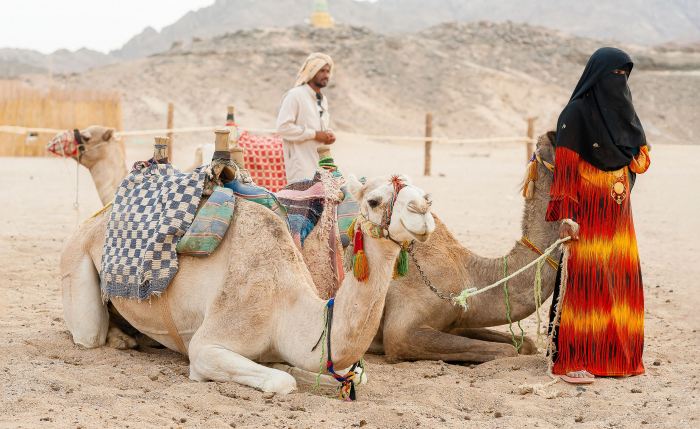
The Bedouin people are a nomadic Arab group with a rich history and culture. They have traditionally inhabited the vast deserts of the Arabian Peninsula, living a life centered around herding, trade, and raiding.
The origins of the Bedouin can be traced back to the ancient tribes of the Arabian Peninsula. Over time, these tribes adopted a nomadic lifestyle, adapting to the harsh desert environment. They developed a unique set of customs and traditions that have been passed down through generations.
Traditional Lifestyle and Customs
The traditional Bedouin lifestyle is based on herding. They raise camels, sheep, and goats, which provide them with food, clothing, and transportation. Bedouin communities are typically small and close-knit, with a strong sense of tribal identity.
Bedouin customs are based on a code of honor and hospitality. They are known for their generosity and their willingness to help those in need. Bedouin society is also highly patriarchal, with men holding most of the power and authority.
Bedouins, known for their nomadic lifestyle, have a deep understanding of the desert. If you’re planning a luxurious desert adventure, consider incorporating some of their knowledge. From choosing the right guide to packing essentials, luxury travel tips can help you create an unforgettable experience.
Bedouins can guide you to hidden oases and introduce you to their traditional customs, enhancing your journey with cultural immersion.
Role in the Development of the Arabian Peninsula
The Bedouin have played a significant role in the development of the Arabian Peninsula. They were instrumental in the spread of Islam, and they helped to establish trade routes across the desert. The Bedouin also played a key role in the formation of the modern Arab states.
Bedouin Art and Crafts
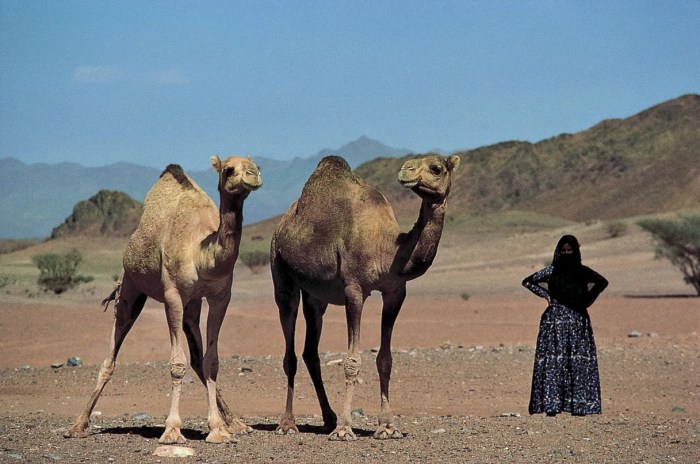
Bedouin art and crafts are an integral part of their cultural heritage, reflecting their nomadic lifestyle and rich traditions. These crafts have been passed down through generations, with each piece carrying symbolic and cultural significance.
Weaving
Bedouin women are skilled weavers, creating intricate textiles using wool, goat hair, and camel hair. Their rugs, blankets, and tents are adorned with geometric patterns and vibrant colors, often inspired by the surrounding desert landscape. These textiles serve both practical and decorative purposes, providing warmth, shelter, and a sense of identity.
Pottery
Bedouin pottery is renowned for its unique designs and functionality. Made from local clay, the vessels are typically hand-built and decorated with geometric patterns and natural motifs. These pots and bowls are used for cooking, storage, and serving food and water.
Jewelry Making
Bedouin jewelry is a testament to their love of adornment and craftsmanship. Women wear intricate necklaces, earrings, and bracelets made of silver, gold, and semi-precious stones. These pieces often incorporate traditional symbols and motifs, such as the hand of Fatima and the crescent moon, which hold cultural and protective significance.
Bedouin Hospitality and Traditions

Hospitality is a cornerstone of Bedouin culture, with deep-rooted traditions and customs that guide interactions with guests.
When welcoming guests, Bedouins follow a strict protocol that demonstrates their respect and generosity. Upon arrival, guests are greeted with warm embraces and heartfelt greetings. They are then invited into the tent, the central gathering space of the encampment, and offered the best seat.
Coffee and Tea: A Symbol of Hospitality
Coffee and tea hold a significant place in Bedouin hospitality. These beverages are not merely refreshments but symbols of welcome and friendship. Guests are served steaming cups of coffee or tea as a gesture of respect and appreciation. The preparation and serving of these drinks are often elaborate and involve specific rituals, adding to the ambiance of hospitality.
Bedouin Literature and Storytelling
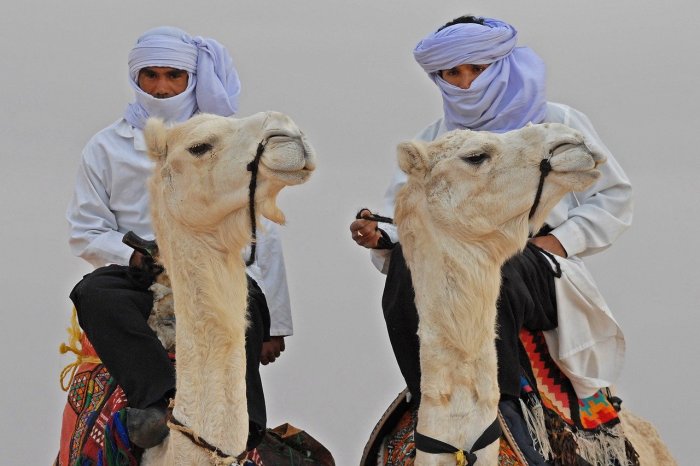
Oral literature holds a significant place in Bedouin culture, serving as a repository of their traditions, values, and collective memory. Poetry, folktales, and proverbs are central to their storytelling tradition, providing insights into their nomadic lifestyle, social customs, and beliefs.
Storytelling plays a vital role in Bedouin society, fostering a sense of community and preserving their cultural heritage. Gatherings around the campfire or during social events often involve the sharing of stories, where elders and experienced storytellers captivate their audience with tales of adventure, love, and wisdom.
Themes and Motifs
Bedouin literature is characterized by recurring themes and motifs that reflect their desert environment, nomadic lifestyle, and cultural values. These include:
- Desert and Nature: The vast and unforgiving desert is a central character in Bedouin stories, shaping their experiences and beliefs.
- Hospitality and Generosity: Bedouin hospitality is renowned, and their stories often emphasize the importance of welcoming guests and providing aid to those in need.
- Love and Romance: Tales of love and longing are common, often featuring star-crossed lovers or forbidden relationships.
- Wisdom and Proverbs: Proverbs and wise sayings are an integral part of Bedouin culture, offering guidance and insights on life’s challenges.
li>Heroism and Courage: Bedouin literature celebrates the bravery and resilience of their warriors, who often face danger and adversity in their journeys.
Bedouin Music and Dance

Music and dance are integral parts of Bedouin culture, serving as expressions of joy, sorrow, and community. Bedouin music is characterized by its unique rhythms, instruments, and lyrics that reflect the nomadic lifestyle and the vast desert landscapes they inhabit.
Musical Instruments
Traditional Bedouin musical instruments include:
- Rababa: A one-stringed fiddle with a distinctive goatskin resonator.
- Mizmar: A double-reed wind instrument with a piercing sound.
- Daf: A large, circular frame drum with goat or sheepskin stretched over it.
Rhythms and Melodies
Bedouin music features complex rhythms and melodies that are often improvised and vary from region to region. The most common rhythms are sama’i, a slow and steady beat, and khafeef, a faster and more lively rhythm.
Role in Celebrations and Rituals
Music and dance play a significant role in Bedouin celebrations and rituals. They are performed at weddings, festivals, and religious ceremonies. Traditional Bedouin dances include the ardah, a sword dance performed by men, and the dabke, a line dance performed by both men and women.
Influence on Other Musical Traditions
Bedouin music has had a profound influence on other musical traditions in the Middle East and beyond. Its rhythms and melodies can be heard in Arab folk music, flamenco, and even Western pop music.
Bedouin Cuisine

Bedouin cuisine, a reflection of their nomadic lifestyle, is a blend of traditional dishes and cooking methods passed down through generations. It is characterized by its simplicity, use of local ingredients, and emphasis on hospitality.
Meals hold significant cultural importance for the Bedouin, fostering a sense of community and togetherness. Food is often shared communally, with guests treated with the utmost generosity.
Bedouins, nomadic desert dwellers known for their resilience, have traversed vast terrains throughout history. Their enduring spirit echoes in the rugged landscapes of Antrim , a region of Northern Ireland renowned for its breathtaking coastal cliffs, rolling hills, and ancient Glens.
Antrim’s natural beauty, shaped by centuries of geological processes, mirrors the enduring nature of the Bedouin, a testament to the human spirit’s unyielding connection to the land.
Traditional Bedouin Dishes
- Marqouq: A thin, unleavened bread cooked on a saj (griddle) and often served with dips or fillings.
- Mansaf: A national dish of Jordan, consisting of lamb cooked in a fermented yogurt sauce served over rice.
- Majboos: A rice dish with meat, vegetables, and spices, popular in the Arabian Peninsula.
- Harees: A porridge made from wheat, meat, and spices, often served during special occasions.
- Kabsa: A rice dish with chicken or lamb, vegetables, and spices, originating from Saudi Arabia.
Cooking Methods
Bedouin cooking methods are influenced by their nomadic lifestyle and limited resources. They often use simple tools and cook over open fires or in clay ovens.
- Saj Cooking: Cooking on a heated griddle (saj) is a common technique for making bread, flatbreads, and other dishes.
- Open-Fire Cooking: Bedouins often cook over open fires, using pots or skewers to prepare food.
- Clay Oven Cooking: Clay ovens are used for baking bread and roasting meat, providing an even distribution of heat.
Local Ingredients
Bedouin cuisine heavily relies on local ingredients, such as:
- Meat: Lamb, goat, and camel are common sources of protein.
- Dairy: Milk, yogurt, and cheese are essential ingredients, providing sustenance and flavor.
- Grains: Rice, wheat, and barley are staples in Bedouin diets.
- Vegetables: Tomatoes, onions, and herbs are commonly used for flavoring and adding nutrients.
Adaptation to Different Regions
While Bedouin cuisine shares common elements, it has adapted to different regions over time, incorporating local flavors and ingredients. For example:
- Jordan: Mansaf is a popular dish, often served with a side of fermented yogurt.
- Saudi Arabia: Kabsa is a widely consumed dish, featuring a blend of spices and long-grain rice.
- United Arab Emirates: Harees is a staple food, particularly during the holy month of Ramadan.
Bedouin Economy and Livelihoods
Traditionally, Bedouin communities have relied on a combination of herding, trade, and agriculture for their livelihoods. Herding has been the mainstay of the Bedouin economy, with sheep, goats, and camels providing sustenance and a source of income through the sale of their products.
Trade has also played a significant role, with Bedouin communities engaging in long-distance trade routes, exchanging goods such as spices, textiles, and livestock. Agriculture has been practiced in some areas, particularly in oases and near water sources, providing crops such as dates, barley, and vegetables.
Challenges in the Modern Economy
In recent times, Bedouin communities have faced challenges in maintaining their traditional livelihoods due to factors such as urbanization, land encroachment, and climate change. Urbanization has led to a decline in herding as land has been converted for other uses. Land encroachment has also reduced the availability of grazing areas for livestock.
Climate change has brought about changes in rainfall patterns and increased desertification, impacting the availability of water and vegetation for herding and agriculture.
Efforts to Support Bedouin Livelihoods
Recognizing the challenges faced by Bedouin communities, efforts have been made to support and develop their livelihoods. These efforts include:
- Alternative Livelihood Programs: Providing training and support for Bedouin communities to develop alternative income sources, such as tourism, handicrafts, and small businesses.
- Sustainable Rangeland Management: Implementing programs to improve grazing practices and protect rangelands, ensuring the long-term viability of herding.
- Agricultural Development: Introducing new technologies and practices to enhance agricultural productivity and resilience in arid environments.
- Education and Training: Investing in education and training opportunities to equip Bedouin youth with skills for employment in various sectors.
Bedouin Society and Family Structure

Bedouin society is organized into tribes, each with its own leader or sheikh. The tribe is the most important social unit, providing protection, support, and a sense of identity for its members. Bedouin families are typically large and extended, with several generations living together in the same household. The family is the basic unit of economic production and consumption, and it is responsible for the care and education of children.
Roles and Responsibilities of Family Members
The father is the head of the household and is responsible for providing for his family. He makes decisions about where the family will live, what work they will do, and how their children will be educated. The mother is responsible for raising the children and managing the household. She also helps her husband with his work, if necessary.
The children are expected to obey their parents and help with the work of the household. As they grow older, they take on more responsibilities, such as caring for younger siblings or helping with the family business.
Importance of Kinship and Tribal Affiliations
Kinship and tribal affiliations are very important in Bedouin society. Bedouins trace their lineage back to a common ancestor, and they believe that they are all related to each other. This sense of kinship creates a strong bond between Bedouins, and it is the basis for their social and political organization.
Tribal affiliations are also important in Bedouin society. Bedouins are proud of their tribe, and they identify themselves with it. The tribe provides its members with protection, support, and a sense of identity.
Bedouin Religion and Beliefs
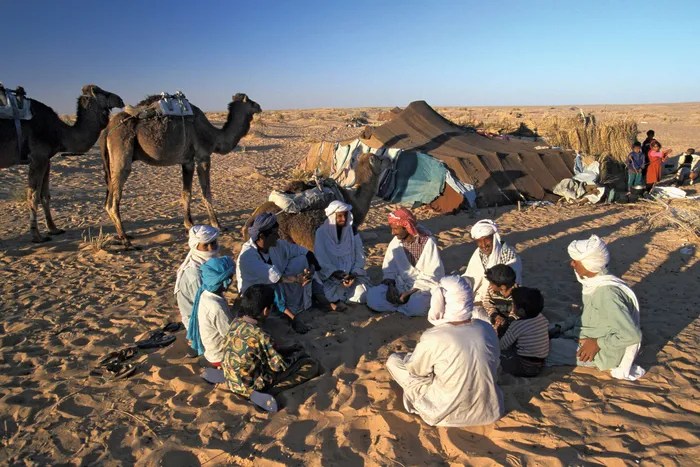
Bedouins are predominantly Muslim, with a strong adherence to the teachings of Islam. Islam has significantly influenced their culture and society, shaping their values, beliefs, and practices.
Influence of Islam on Bedouin Culture
Islam has played a central role in shaping Bedouin culture, influencing their daily lives, customs, and social interactions. The principles of Islam, such as monotheism, prayer, fasting, and charity, are deeply ingrained in Bedouin society.
- Prayer: Bedouins observe the five daily prayers prescribed by Islam, which are considered a cornerstone of their religious practice.
- Fasting: During the month of Ramadan, Bedouins observe a strict fast from sunrise to sunset, abstaining from food and drink.
- Charity: The concept of charity (zakat) is highly valued in Bedouin culture, and they often contribute a portion of their wealth to those in need.
Role of Religious Leaders and Rituals
Religious leaders, known as sheikhs, hold a respected position in Bedouin communities. They serve as spiritual guides, interpreters of Islamic law, and mediators in disputes. Bedouin communities also observe various religious rituals and celebrations, such as:
- Pilgrimage to Mecca: Many Bedouins undertake the pilgrimage (hajj) to Mecca, considered a sacred duty for Muslims.
- Eid al-Fitr and Eid al-Adha: These festivals mark the end of Ramadan and the pilgrimage season, respectively, and are celebrated with feasts and festivities.
- Religious festivals: Bedouins also celebrate other Islamic festivals, such as Mawlid al-Nabi (the Prophet’s birthday) and Ashura (the commemoration of the martyrdom of Imam Hussein).
Bedouin in the Modern World
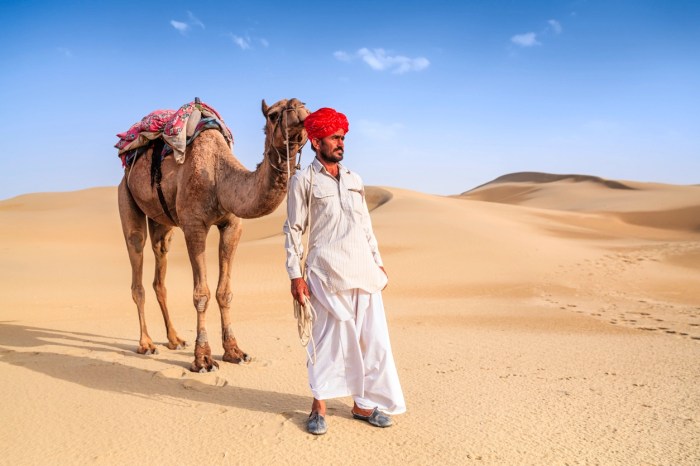
In the 21st century, Bedouin communities face a unique set of challenges and opportunities as they navigate the rapidly changing world. Globalization and urbanization have had a significant impact on their traditional culture and way of life.
One of the biggest challenges facing Bedouin communities is the loss of their traditional lands. As cities and towns expand, the desert areas where Bedouins have traditionally lived and grazed their animals are being encroached upon. This has led to conflicts between Bedouins and other communities, as well as a loss of their traditional way of life.
Another challenge facing Bedouin communities is the erosion of their traditional values and customs. As Bedouins become more exposed to the outside world, they are increasingly adopting modern values and lifestyles. This has led to a decline in the importance of traditional customs and practices, such as hospitality, respect for elders, and the role of women in society.
Despite these challenges, Bedouin communities are also finding new opportunities in the modern world. Education and employment opportunities are opening up for Bedouins, and many are taking advantage of these opportunities to improve their lives. Bedouins are also becoming more involved in politics and civil society, and they are working to preserve their culture and traditions while adapting to the changing world.
Bedouins, known for their nomadic lifestyle and deep connection to the desert, have a rich cultural heritage that has been passed down through generations. While their traditions are often associated with arid landscapes, their travels have taken them to diverse environments, including the lush forests of the Appalachian Mountains.
One such destination is anna ruby falls , a breathtaking waterfall nestled amidst the vibrant greenery of Georgia. The cascading waters and serene surroundings provide a stark contrast to the vast deserts they call home, yet the spirit of adventure and appreciation for nature remains an enduring thread that connects the bedouin people to this enchanting natural wonder.
Efforts to Preserve and Revitalize Bedouin Heritage
There are a number of efforts underway to preserve and revitalize Bedouin heritage. These efforts include:
- The establishment of cultural centers and museums that showcase Bedouin history and culture.
- The development of educational programs that teach Bedouin children about their culture and traditions.
- The support of traditional Bedouin crafts and arts.
- The promotion of Bedouin tourism as a way to generate income and raise awareness of Bedouin culture.
These efforts are helping to ensure that Bedouin heritage is preserved for future generations.
Epilogue

In the tapestry of human civilization, bedouins have woven a vibrant thread, their culture and traditions enduring through the sands of time. From their origins as nomadic herders to their contributions to art, literature, and music, bedouins have left an indelible mark on the world. As we bid farewell to this exploration, let us carry with us a newfound appreciation for their resilience, hospitality, and the enduring spirit that defines their way of life.
General Inquiries
Who are the bedouins?
Bedouins are nomadic Arab people who have traditionally inhabited the deserts of the Arabian Peninsula.
What is the traditional lifestyle of bedouins?
Bedouins are traditionally nomadic herders who rely on their livestock for sustenance and transportation.
What is the significance of hospitality in bedouin culture?
Hospitality is of utmost importance in bedouin culture, and guests are welcomed with open arms and treated with the utmost respect.